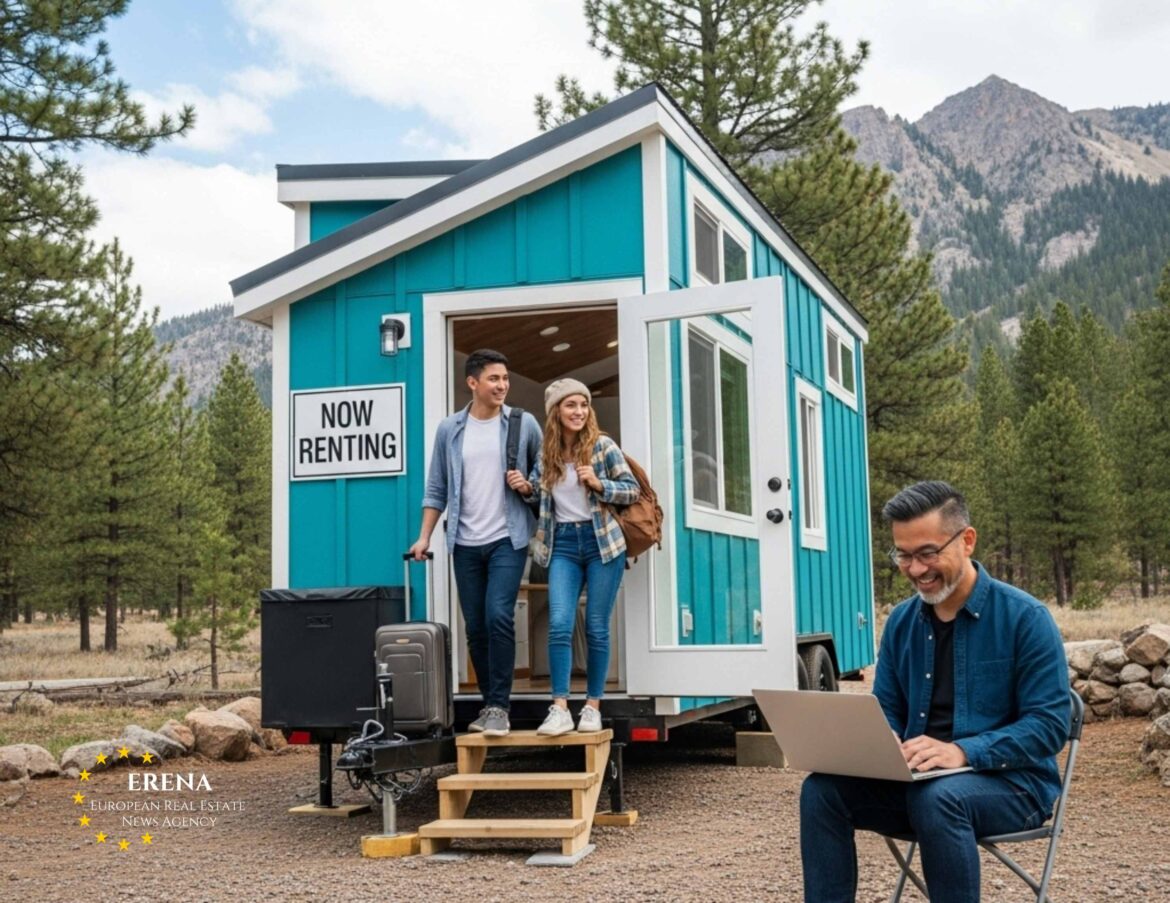The real estate market in 2025 is undergoing a transformation. Alongside traditional investments in apartments and houses, there’s growing interest in alternative housing formats. Tiny homes and RVs (recreational vehicles) have shifted from niche lifestyle choices to reliable sources of passive income for thousands of owners worldwide. Compact, affordable, and often sustainable, these units can generate steady returns with relatively low upfront costs.
Why Tiny Homes and RVs Are Gaining Popularity
Several factors are fueling the rise of tiny homes and RVs as attractive investment options:
- Affordability: A tiny home costs between €25,000 and €80,000, while RVs range from €15,000 to €60,000 depending on features and size.
- Mobility: Owners can relocate or rent in seasonal hotspots — ideal for tourism-driven markets.
- Sustainability: Many units come with solar panels, composting toilets, and efficient insulation.
- Experience-driven travel: Renters increasingly seek unique, offbeat stays, especially for remote work or nature getaways.
Income Opportunities from Tiny Homes and RVs
There are several ways to turn these compact dwellings into income-generating assets. The best option depends on your location, local regulations, and willingness to manage operations.
1. Short-Term Rentals via Airbnb and Similar Platforms
Tiny homes and RVs are in high demand on Airbnb, Booking.com, GlampingHub, and other short-term rental platforms — especially if located in scenic or tourist-heavy areas.
- Potential income: €50–€200 per night, depending on season and location.
- Pros: High returns, flexible pricing, direct guest interaction.
- Cons: Requires active management (cleaning, guest communication, listings).
Tip: Enhance your listing by offering experiences — like fire pits, morning yoga, bike rentals, or paddleboards.
2. Long-Term Rentals
For hands-off investors, long-term rentals can provide consistent income:
- Tiny homes: Rental rates typically range from €400–€900 per month depending on proximity to urban centers.
- RVs: Often used for temporary housing or business purposes, with monthly rents around €300+.
This strategy works well in areas with housing shortages, near universities, factories, or logistics hubs.
3. Hosting on Private Land or Campgrounds
If you own a plot of land, you can place one or more tiny homes or RVs and lease them.
- Example: On a 1,000 m² plot, 3–5 units can be installed, each earning €700–€1,200 per month year-round.
- Added revenue from extras: meals, spa services, tours, or bike rentals.
Note: Always check local zoning laws and land-use regulations before launching.
4. Seasonal Placements at Festivals, Beaches, or Mountains
RVs and mobile homes are perfect for moving to where demand peaks: music festivals, surf camps, vineyards, or hot springs.
- Earnings: One unit can generate €6,000–€10,000 during a 3–4 month peak season.
- Pros: High ROI, minimal infrastructure needed.
- Cons: Involves transportation, may require temporary permits or event agreements.
Getting Started
To make your tiny home or RV a successful income source, consider these key steps:
1. Design and Amenities
A well-furnished tiny home should include:
- Comfortable sleeping area (good mattress, clean linens)
- Small kitchenette (kettle, stove, fridge)
- Bathroom (if space allows)
- Heating/AC, lighting, Wi-Fi
2. Legal Requirements
Research:
- Land zoning and what type of structures are allowed
- Whether you need rental permits or business licenses
- If the unit qualifies as a permanent structure under local codes
Countries like France, Spain, and the Netherlands have dedicated regulations for temporary dwellings and mobile homes.
3. Branding and Marketing
Your unit is more than a place to stay — it’s an experience. Create:
- Listings with high-quality photos and storytelling
- A unique name or concept (e.g., “Lavender Cabin” or “Artist’s Lakeside Retreat”)
- An Instagram page or basic website to attract direct bookings
4. Property Management
If you’re not local:
- Hire a management company or a local host
- Use smart locks and contactless check-in systems
- Automate climate control and lighting to save energy
Cost & ROI Breakdown
| Expense Category | Tiny Home (€) | RV (€) |
|---|---|---|
| Purchase or Build | 30,000 | 20,000 |
| Furnishing & Setup | 5,000 | 3,000 |
| Utilities/Connections | 3,000 | 2,000 |
| Marketing & Photography | 500 | 500 |
| Total Investment | 38,500 | 25,500 |
Average payback period: 18 months to 3 years, assuming 60–70% occupancy and nightly rates from €70.
Real-Life Success Stories
- A German couple installed a tiny home in Tuscany, renting it year-round for €140/night.
- A Portuguese entrepreneur operates 5 RVs along the coast, earning over €40,000 each season.
- In Ukraine, eco-tourism startups are developing glamping parks using mobile tiny homes.
Conclusion
Tiny homes and RVs aren’t just a lifestyle trend — they represent a practical and profitable way to diversify your real estate portfolio. With lower entry costs, strong rental demand, and flexible usage, they offer both income potential and creative satisfaction.
When planned and managed well, these compact dwellings can generate reliable passive income while providing travelers with memorable, sustainable stays.

